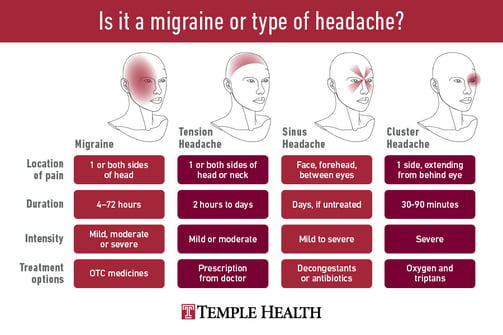Perinatal and Postnatal
5/8/20254 min read


How Chiropractors Can Help with Headaches and Migraines
Headaches and migraines are common and often debilitating conditions that can severely impact quality of life. While over-the-counter and prescription medications offer temporary relief, they often fail to address the root causes. Many headaches, particularly tension-type and cervicogenic headaches, are linked to musculoskeletal issues in the neck and upper back. Chiropractors specialize in identifying and treating spinal misalignments and muscular imbalances that contribute to these conditions. By correcting vertebral subluxations and improving joint mobility, chiropractic care offers a drug-free, non-invasive option for managing headache disorders (Bryans et al.; Vernon and McDermaid).
Chiropractic adjustments can be especially effective for tension headaches and migraines triggered by poor posture, stress, or spinal dysfunction. Research shows that spinal manipulation can reduce headache frequency, intensity, and duration by addressing the mechanical and neurological components involved in pain generation. A clinical trial published in the Journal of Manipulative and Physiological Therapeutics found that spinal manipulation was as effective as amitriptyline, a common migraine medication, in reducing migraine episodes—and without the side effects (Nelson et al.). Adjustments may help relieve muscle tension, enhance circulation, and decrease nerve irritation in the cervical spine, all of which contribute to headache relief.
In addition to spinal manipulation, chiropractors often incorporate soft tissue therapy, ergonomic advice, posture correction, and lifestyle counseling to prevent headache recurrence. This holistic approach not only treats the symptoms but also targets the contributing factors, such as forward head posture or poor workstation setup. A study published in Cephalalgia found that patients who received manual therapy, including chiropractic care, experienced fewer headache days compared to those who only used medication (Chaibi et al.). Chiropractors aim to empower patients through education and personalized care plans that support long-term headache management.
In conclusion, chiropractic care offers a comprehensive and effective approach to managing headaches and migraines, particularly for those seeking alternatives to pharmaceuticals. By correcting spinal misalignments, reducing muscle tension, and improving nervous system function, chiropractors can help patients find relief from both chronic and episodic headaches. With a growing body of evidence supporting its use, chiropractic care should be considered a valuable component of a multidisciplinary approach to headache treatment (ICPA; Biondi).
Works Cited
Biondi, David M. “Physical Treatments for Headache: A Structured Review.” Headache: The Journal of Head and Face Pain, vol. 45, no. 6, 2005, pp. 738–746. https://doi.org/10.1111/j.1526-4610.2005.05141.x
Bryans, Roland, et al. “Evidence-Based Guidelines for the Chiropractic Treatment of Adults with Headache.” Journal of Manipulative and Physiological Therapeutics, vol. 34, no. 5, 2011, pp. 274–289. https://doi.org/10.1016/j.jmpt.2011.04.008
Chaibi, Aleksander, et al. “Manual Therapy for Migraine: A Systematic Review.” Cephalalgia, vol. 31, no. 5, 2011, pp. 505–514. https://doi.org/10.1177/0333102410385580
International Chiropractic Pediatric Association (ICPA). “Headaches and Chiropractic.” ICPA4Kids.org, https://icpa4kids.org. Accessed 13 May 2025.
Nelson, Christopher F., et al. “A Randomized Controlled Trial of Chiropractic Spinal Manipulation for Migraine.” Journal of Manipulative and Physiological Therapeutics, vol. 22, no. 8, 1998, pp. 517–522. https://doi.org/10.1016/S0161-4754(99)70005-3
Vernon, Howard, and Sandra McDermaid. “Chiropractic Management of Tension-Type Headaches: A Review of the Evidence.” Journal of the Canadian Chiropractic Association, vol. 52, no. 4, 2008, pp. 214–221.
You can find Soda City Chiropractic | A Columbia Chiropractor at:
2205 Main Street, Columbia, SC 29201
Email: dcarr@sodacitychiro.com
Phone: 803-966-7689


How Chiropractors Can Help with Fetal Position During Pregnancy
During pregnancy, optimal fetal positioning is crucial for a smooth and safe delivery. Malpositioned fetuses—such as breech or transverse—can lead to complications during labor, including prolonged labor, increased need for medical intervention, or cesarean delivery. Chiropractors trained in prenatal care can assist expectant mothers by helping to balance the pelvis, reduce uterine constraint, and improve the alignment of the spine and pelvis, all of which can encourage the baby into the optimal head-down position for birth (Borggren; Webster).
One of the most well-known chiropractic techniques used during pregnancy is the Webster Technique, a specific chiropractic sacral analysis and adjustment designed to reduce the effects of sacral subluxation and SI joint dysfunction. By improving pelvic balance and alignment, the technique may reduce intrauterine constraint and allow the fetus more room to move into the proper position. A study published in the Journal of Manipulative and Physiological Therapeutics found that 82% of breech babies turned to the vertex position following chiropractic care using the Webster Technique (Petersen et al.). While chiropractic care does not directly turn the baby, it facilitates the mother's biomechanics to support natural fetal movement.
In addition to spinal and pelvic adjustments, chiropractors often incorporate soft tissue therapy, stretching exercises, and lifestyle recommendations to support maternal comfort and mobility. These interventions may also help reduce lower back pain, round ligament discomfort, and other musculoskeletal issues common during pregnancy that can restrict fetal movement (Browning; Alcantara et al.). By addressing these biomechanical challenges, chiropractic care enhances the body’s ability to support a healthy pregnancy and potentially smoother labor and delivery outcomes.
In conclusion, chiropractic care offers a safe and non-invasive way to support optimal fetal positioning during pregnancy. Techniques such as the Webster Technique can help balance the pelvis, reduce uterine tension, and promote an ideal environment for fetal movement. When combined with proper prenatal care and guidance from healthcare providers, chiropractic adjustments can play a valuable role in helping expectant mothers prepare for a successful birth (ICPA; Ohm).
Works Cited
Alcantara, Joel, et al. “The Webster Technique: A Chiropractic Technique with Obstetric Implications.” Journal of Pediatric, Maternal & Family Health – Chiropractic, 2012.
Borggren, Cara L. “Pregnancy and Chiropractic: A Narrative Review of the Literature.” Journal of Chiropractic Medicine, vol. 6, no. 2, 2007, pp. 70–74. https://doi.org/10.1016/j.jcme.2007.02.003
Browning, James E. “The Sacroiliac Joint and Pregnancy: Chiropractic Management of Pregnancy-Related Low Back Pain.” Journal of Manipulative and Physiological Therapeutics, vol. 21, no. 7, 1998, pp. 447–453.
International Chiropractic Pediatric Association (ICPA). “Webster Technique.” ICPA4Kids.org, https://icpa4kids.org. Accessed 13 May 2025.
Ohm, Jeanne. “The Chiropractic Care of Pregnant Women with Breech Presentations and the Use of the Webster Technique.” Journal of Clinical Chiropractic Pediatrics, vol. 6, no. 1, 2001, pp. 349–362.
Petersen, D.C., and B.L. Upledger. “Resolution of Breech Presentation Using the Webster Technique.” Journal of Manipulative and Physiological Therapeutics, vol. 22, no. 9, 1999, pp. 603–607.
You can find Soda City Chiropractic | A Columbia Chiropractor at:
2205 Main Street, Columbia, SC 29201
Email: dcarr@sodacitychiro.com
Phone: 803-966-7689
